
Plate Tectonics History of Virginia (Part 5)
480 to 250 Million Years Ago

• The Iapetus Ocean began to close and subduction occurred along Virginia’s coastline. New landmasses called terranes collided with and attached to the continent.
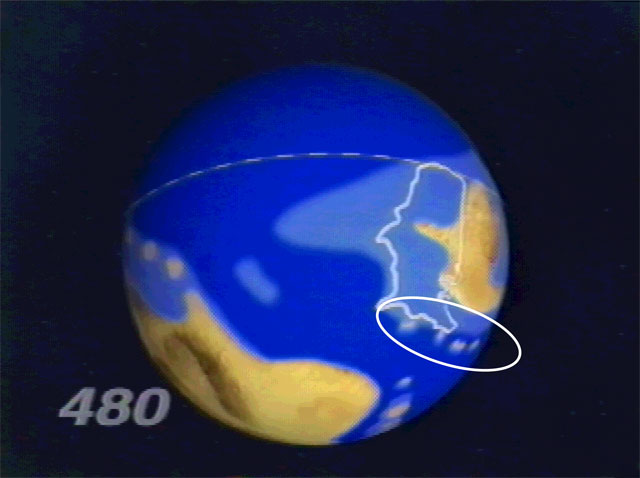
Reconstruction of the world 480 million years ago. Note the formation of small landmasses off the coast of ancient North America (oval). These landmasses were volcanic arcs that indicate the beginning of the closing of Iapetus Ocean. (Image courtesy of the United States Geological Survey)
• 480 million years ago, island arcs began to form off the coast of ancient North America. These island arcs indicate that subduction was occurring. As Iapetus continued to close, eventually, the island arcs were pushed or collided onto ancient North America where they formed terranes.
• Terranes are recognized today in Virginia as regions of rock that differ from the rocks surrounding them. Typically, the terranes formed in Iapetus Ocean as island arcs, or as piles of sediment that were deposited in Iapetus, or even as continental fragments from areas outside Virginia.
• These terranes are found today as metamorphosed and intruded rocks in the central and eastern Piedmont.
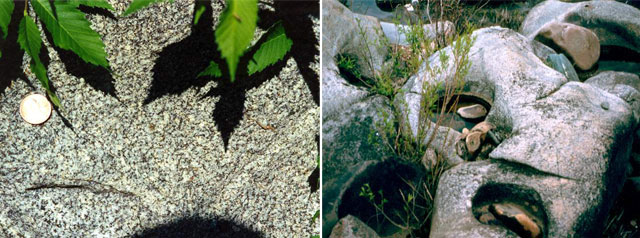
Granite intrusions in the Piedmont: the Columbia Granite (left, photograph by Stan Johnson) and the Petersburg Granite (right, photograph by Robert Whisonant).
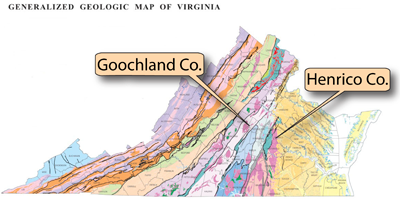 As terranes attached to Virginia, granites intruded the existing rock. The Columbia granite (above left), from Goochland County, and the Petersburg Granite (above right), from Henrico County, are examples of these granites.
As terranes attached to Virginia, granites intruded the existing rock. The Columbia granite (above left), from Goochland County, and the Petersburg Granite (above right), from Henrico County, are examples of these granites.
• The Valley and Ridge contains thick piles of the conglomerate, sandstone, and shale that eroded from the mountains formed by each collision.
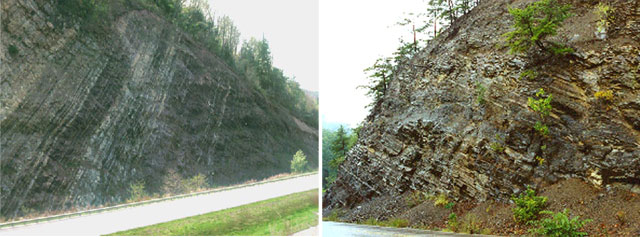
The sediments that form these rocks were eroded from the mountains created when the island arcs and other terrains collided with ancient North America as Iapetus closed. Left: Wythe County (photograph by Robert Whisonant); right: Alleghany County (photograph by Stan Johnson).
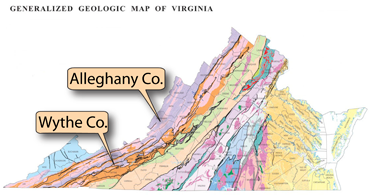 As each terrane collision pushed up new mountains to the east, the mountains began to erode, depositing thick piles of sediment in what would become the Valley and Ridge and Appalachian Plateaus. Some of these sediments are found in Wythe County (left) and Alleghany County (right).
As each terrane collision pushed up new mountains to the east, the mountains began to erode, depositing thick piles of sediment in what would become the Valley and Ridge and Appalachian Plateaus. Some of these sediments are found in Wythe County (left) and Alleghany County (right).